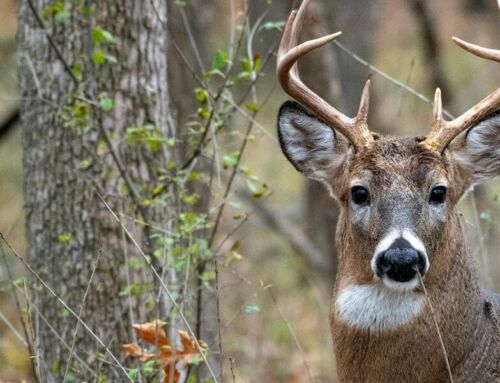Every summer, communities across the Southeast unite in a citizen science effort to celebrate and track pollinators—and this year, Stowe was part of it! The Great Southeast Pollinator Census (GSEPC) is a hands-on science initiative created by the University of Georgia that invites everyday people—from students and gardeners to business teams—to count pollinator visits in their neighborhoods.
What’s the Purpose?
Launched as a pilot in 2017, the project expanded into the first statewide Great Georgia Pollinator Census in 2019, drawing over 4,000 participants. Since then, it has grown to include:
- South Carolina (joined in 2022)
- North Carolina (2023)
- Florida (2024)
- Alabama (2025)
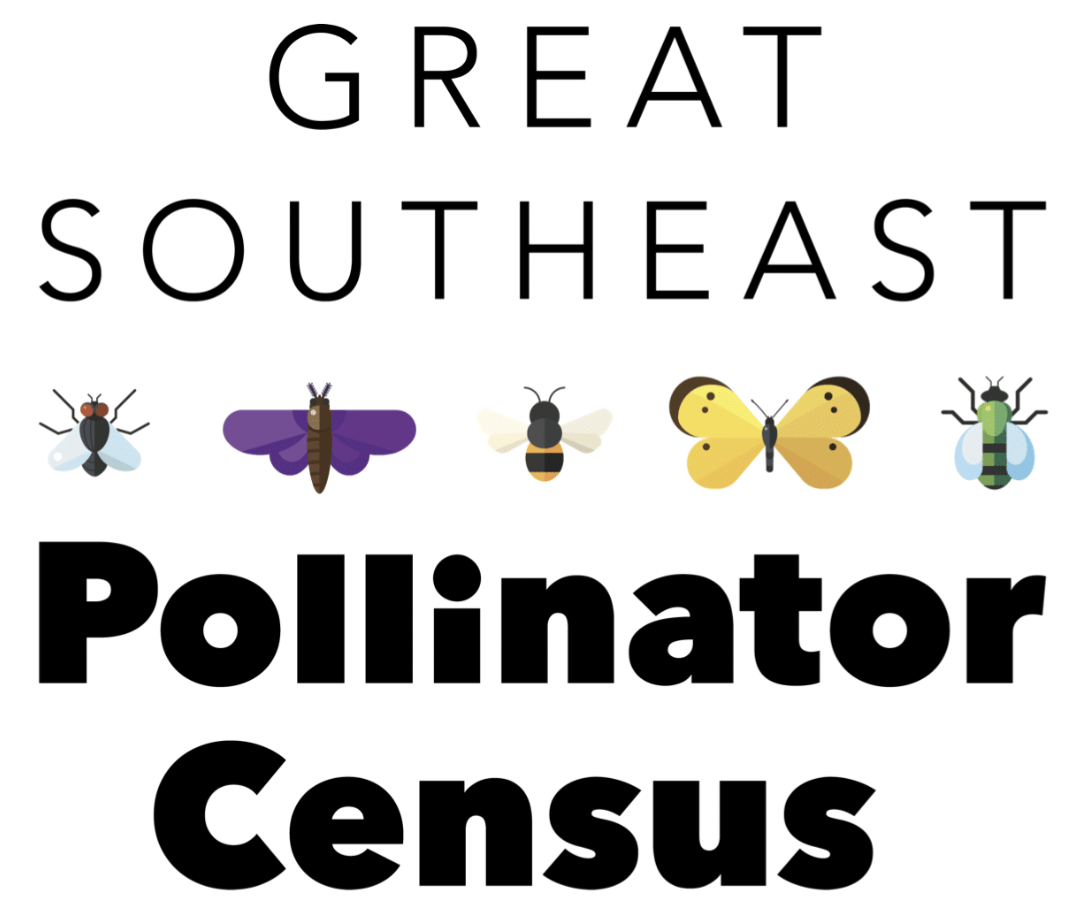
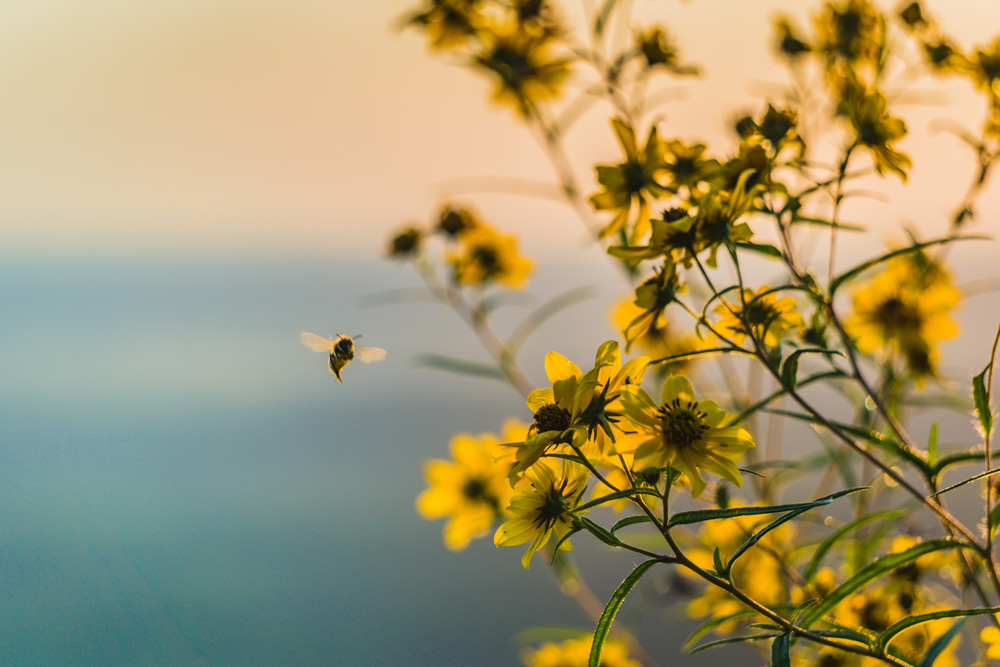
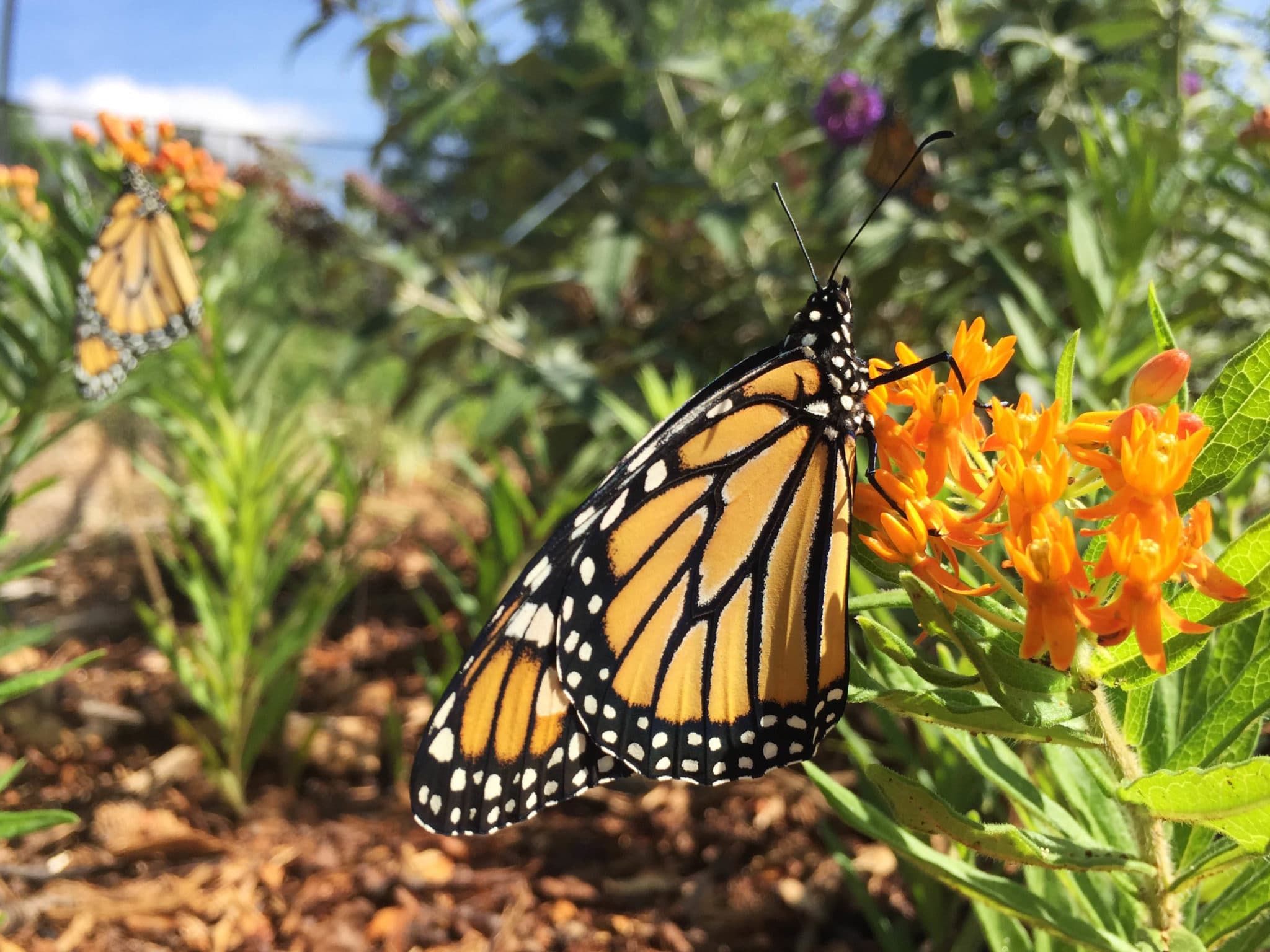

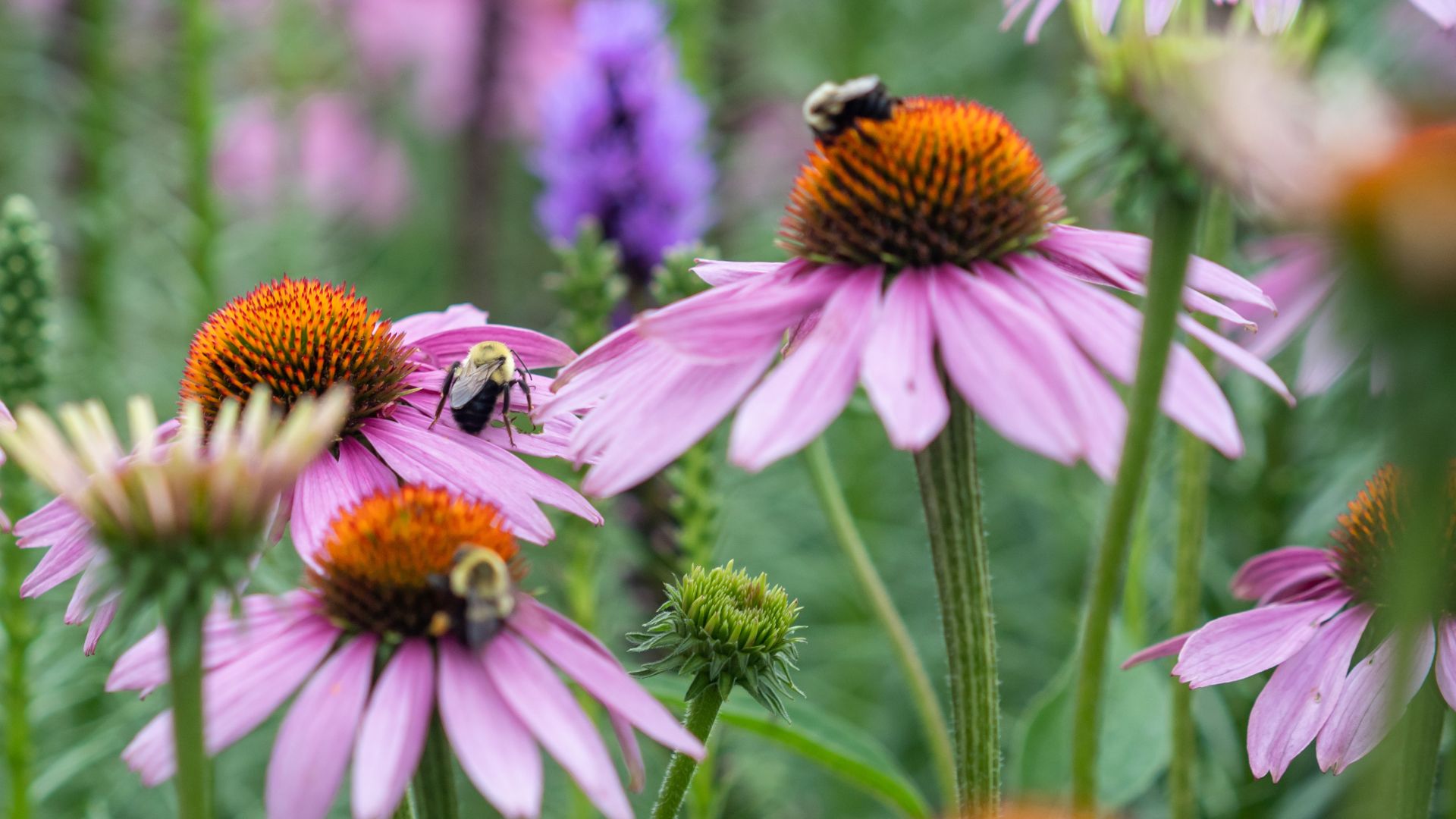
Its goals include:
- Promoting pollinator-friendly habitats by sharing planting tips suited for summer drought and minimizing pests.
- Boosting entomological literacy—helping citizens move from “Oh, it’s a bug” to “Look at the bee’s tarsal claw.”
- Generating meaningful data to track pollinator trends, influence agricultural planning and support conservation efforts.
- Contributing to research and valuation studies, including economic assessments of pollination.
- Providing academia and classrooms with real-world examples of ecology, math and science.
- Helping shape pollinator-friendly environments with the design of gardens and public spaces.
This Year’s Census
Here’s the breakdown of this year’s Great Southeast Pollinator Census at Stowe from August 22-24:
- Step 1: Participants picked their favorite blooming plant—one with visible insect activity.
- Step 2: They watched for insects landing on it and tally each “visit” over 15 minutes, using the eight simple categories for identification:
bumble bees, carpenter bees, honey bees, small bees, wasps, flies, butterflies/moths and other insects - Step 3: Participants then entered their count on the Census website.
Why It Matters
- Pollinators are vital—over 75% of flowering plants and about a third of our food rely on animal pollination. In North America alone, more than 3,500 native bee species bolster crop yields and ecological balance.
- Threats are real—from habitat loss to disease and environmental stressors. Our participation helps build a protective, data-driven response.
Overall, we observed eight types of insects over three days with results pulled from 22 documented observations.
Please note that the Stowe numbers are pulled from just the forms that were turned back in to us and not reflective of many participants who self-reported their results.
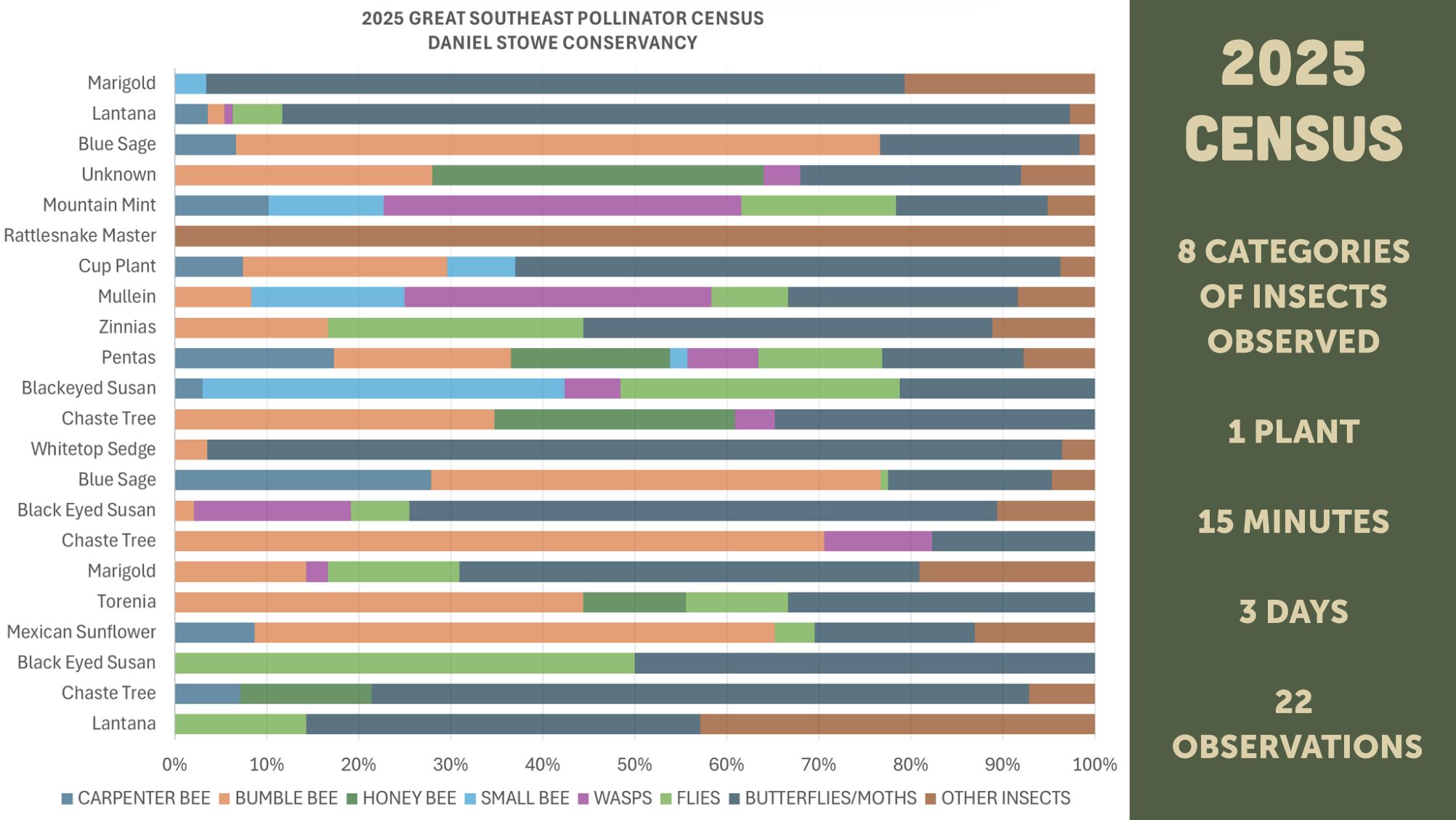
August 22, 2025
- Weather conditions: 75 and cloudy
- Total observations: 9
- Top insects observed: Butterflies/moths and bumblebees
- Plants with most diverse range of pollinators: Blue Sage, Black-Eyed Susan, Mexican Sunflower

August 23, 2025
- Weather conditions: 80 and cloudy
- Total observations: 11
- Top insects observed: Butterflies/moths, bumblebees and honeybees
- Plants with most diverse range of pollinators: Pentas, Mullein, Black-Eyed Susan, Cup Plant and Mountain Mint
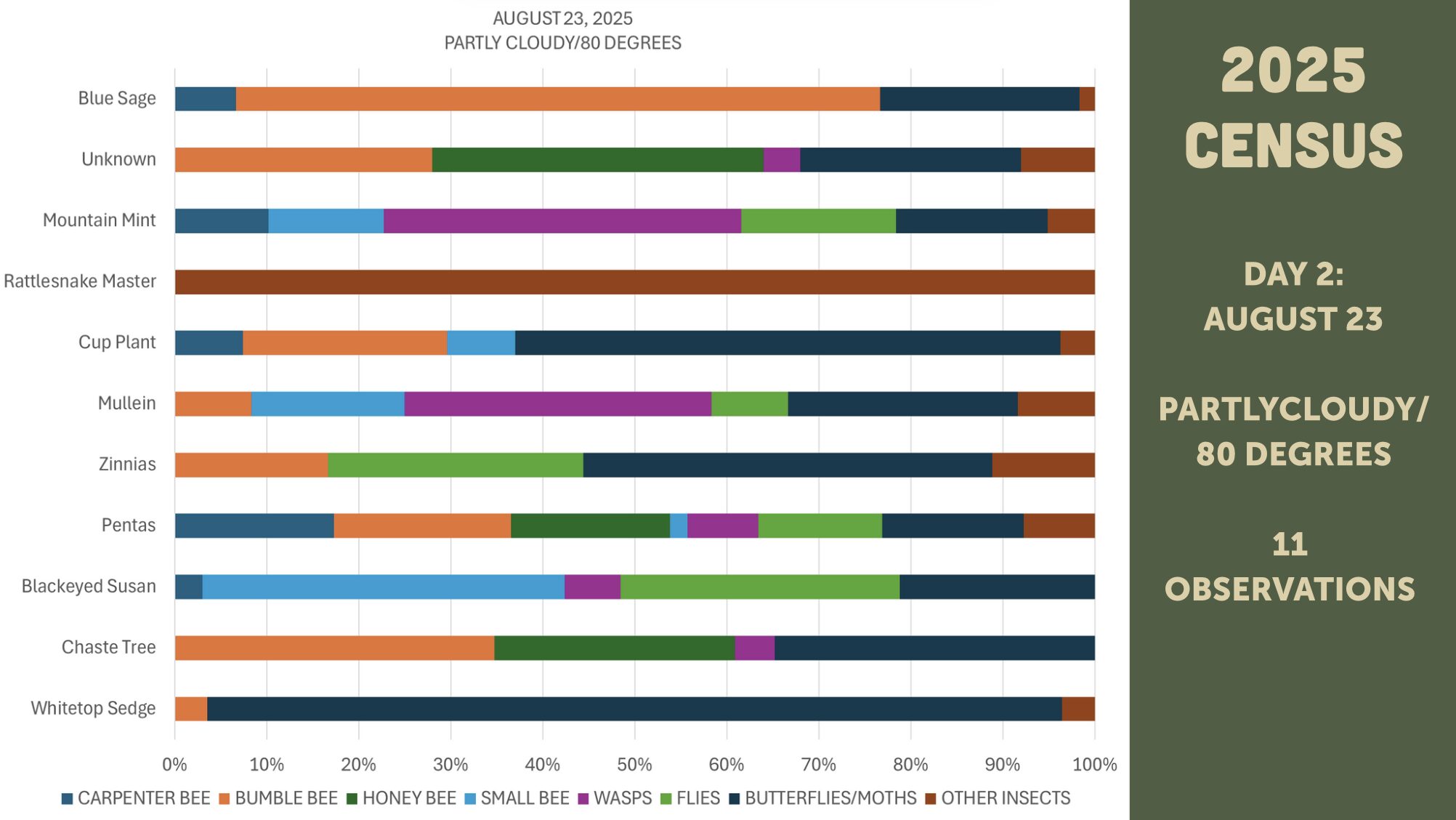
August 24, 2025
- Weather conditions: 85 and sunny
- Total observations: 2
- Top insects observed: Butterflies/moths and flies
- Plants with most diverse range of pollinators: Lantana
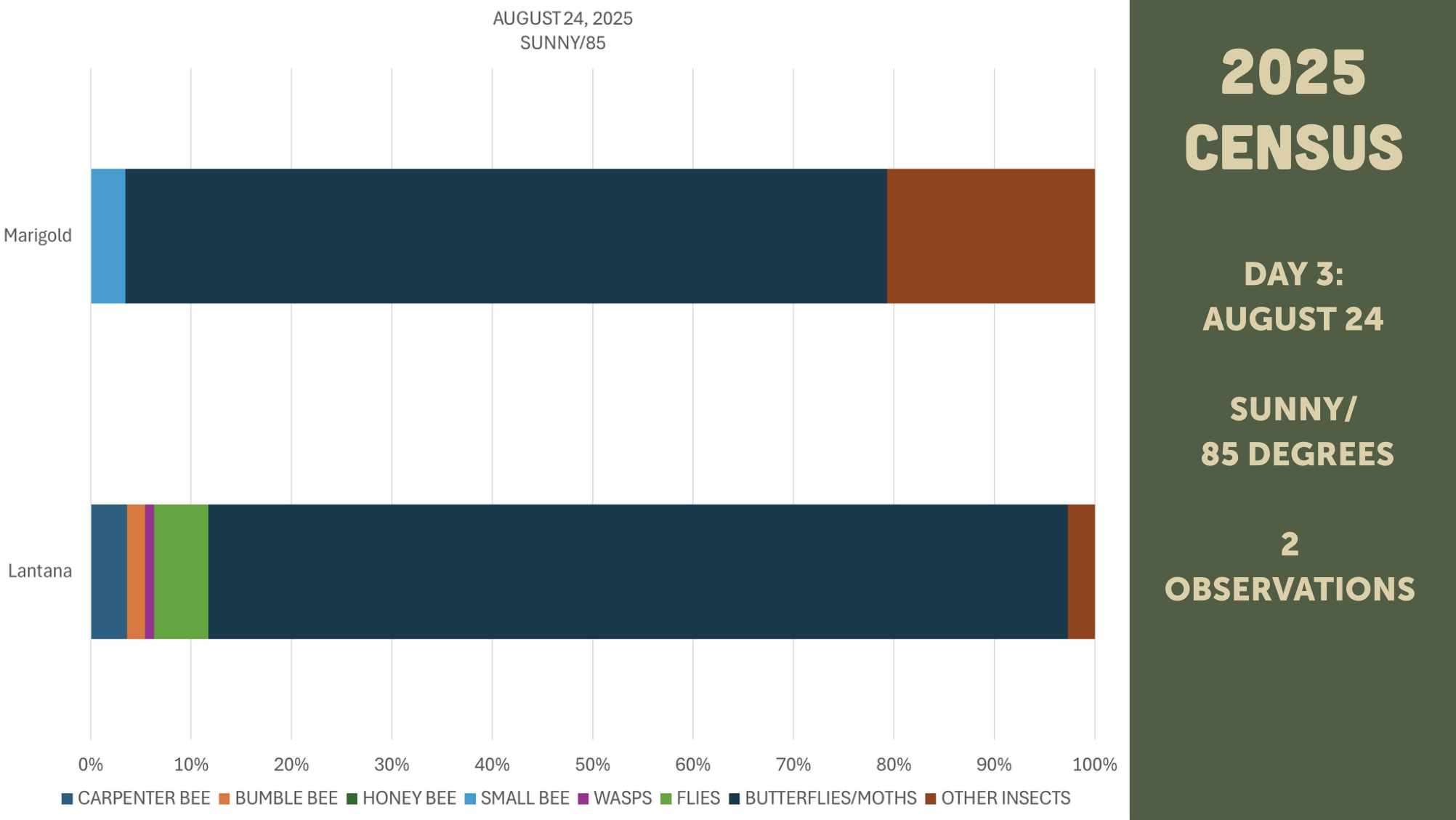
We also learned from GSEPC that there were more than 4,300 counts across the state of North Carolina! This is almost double from 2024, and more than triple 2023’s Counts (which was the inaugural year).
Thank you to everyone who participated in the 2025 Great Southeast Pollinator Census! We encourage you to continue monitoring GSEPC for updated data about pollinators and how you can take steps today to support pollinator conservation efforts.

